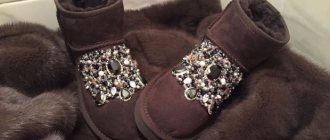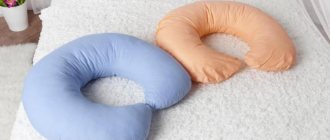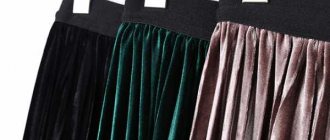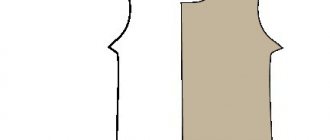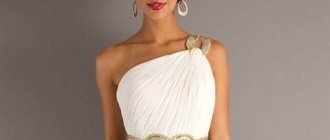Pillows come not only in different shapes, but also with different fillings
If you stuff your pillows yourself, you can save a lot of money.
Using useful tips and following the filling technology, you will get a beautiful accessory and a restful sleep. There are a lot of different materials for stuffing pillows, and we will talk about their properties in this article.
Stuffing materials and their properties
What to stuff the pillows with? Stuffing materials are usually divided into artificial fillers and natural ones.
Natural ones include:
- down or feather;
- buckwheat husk;
- natural wool yarn;
- ordinary cotton wool;
- leaves of herbs such as lavender, mint, hops, etc.;
Herbal pillow
- scraps of cotton fabric or knitwear;
- sea grass.
Synthetic ones are used much more often, since they are lower in cost, usually do not require special care and are perfect for decorative pillows.
Artificial fillers include:
- Holofiber is a type of non-woven structure. The filler is a web of hollow, twisted fibers that form a large number of pores;
- Sintepon is absolutely universal. This is a non-woven fabric belonging to the class of artificial insulation;
- Polystyrene - has a granular structure, which is obtained from a transparent liquid substance - styrene. Very light and airy, able to repel water. Also has an anti-stress effect;
- Synthetic down resembles natural bird down, but is made of siliconized fiber;
- Silicone beads are an unusual filler. Suitable for massage lovers and, of course, children will enjoy it;
- Struttofiber is a non-woven material, very similar to wool, soft to the touch, elastic and well structured. Well suited for poufs and structured pillows;
- Comforel is one of the most popular artificial fillers made from small balls made of synthetic fiber.
Artificial fillers
Synthetic fillers
Synthetic fillers for stuffing pillows cope with their responsibilities no worse than natural materials and have several clear advantages:
- They do not contribute to the appearance of dust mites, which means they can be used by people prone to allergies.
- Bedding with synthetic material inside is very easy to care for. They are machine washable and dry quickly.
Sintepon
The most budget-friendly and at the same time short-lived synthetic filler is padding polyester. The soft porous material is used not only for making home textiles, but also as insulation when sewing clothes.
A significant disadvantage of padding polyester is that it quickly cakes and does not recover its shape well. After some time, a pillow with such filling becomes lumpy, hard and uncomfortable.
Holofiber
Holofiber is a non-woven synthetic material consisting of polyester fibers intertwined. The cavities between the finest fibers are filled with air, which makes the material incredibly warm and light.
This insulation:
- wonderfully breathable;
- removes moisture;
- does not absorb foreign odors;
- does not accumulate static electricity;
- does not support the vital activity of parasites;
- can last more than 5 years;
- can be washed and dried in a washing machine.
Synthetic yarn and faux fur
An excellent solution to the question of how to stuff a homemade sofa cushion is to use pieces of faux fur, synthetic fabric or yarn. You can use old tights, scraps of knitwear or other synthetic fabric left over from sewing a dress, and unnecessary pieces of faux fur.
To make the surface of the pillow look more even, the filling, made by yourself, can be placed between two layers of foam rubber or rolled padding polyester.
Types of decorative pillows and the principle of their filling
There are only a few varieties of decorative pillows that can harmoniously complement your interior.
Types of pillows with different fillings
[Show slideshow]
However, choosing a more suitable padding material is a very important step.
For the living room
Soft support is used for furniture that most often does not have a back. It will complement the interior, add color and comfort to the room. They can be made large, like a full-fledged back of a sofa or armchair, or small for decoration and convenience when relaxing.
A pillow is an indispensable detail in the living room interior.
For decorative ones, dense but light unnatural “insides” are suitable. It will not be difficult to make them with your own hands. The style and size are a matter of your taste and imagination.
Rollers
They are great for the bedroom and living room. They are used for armrests or for decoration. They can have different shapes, from a regular roller to a candy or a dog.
Using your imagination, you can turn such a soft roller into a sweet candy
Foam rubber is suitable for filling them. It holds its shape well and is also very lightweight.
pillow bolster
Pillows - Toys
If you have children, then this pillow format is the best option for a children's bedroom. The style can be anything, it’s up to your imagination. There are a lot of options for sewing - patterns can be found in many magazines for creativity or you can come up with a design for such a toy yourself. It is better to choose a synthetic filler, and in particular synthetic padding, foam rubber or silicone balls.
Teddy bear - pillow
Sleep is one of the main ways to maintain the health of our body. Its duration and benefits for a person depend on the comfort in the bed.
Decorative pillows in different styles
A stylish and self-sufficient accessory will perfectly complement any interior if you choose it correctly. Cushions go with almost any design, but we have some of the most striking options for you.
Elegant Provence
Fabrics are one of the main accessories in Provence, and romantic pillows with ruffles and lace fit right in with the family. Choose pastel colors and small floral and floral motifs.
Hand embroidery looks especially impressive, which can be repeated on other elements: curtains, tablecloths, bedspreads, bed linen, napkins and potholders.
Cozy Scandinavian style
Cozy Scandinavian minimalism gravitates towards an abundance of pillows, rugs and other symbols of the home. Use coarse fabrics, voluminous knitwear, unusual shaped pillows. Any Scandinavian handmade style is especially organic.
Industrial loft
It's the accessories that give personality to an intentionally simple and raw industrial loft. Bright multi-colored pillows on a simple plain sofa would be appropriate here. They go well with bean bag chairs and other interesting accents.
Extravagant pop art
Catchy and eye-catching pop art is especially fond of prints, provocative lettering and rich colors. Use all this on decorative pillows - and they will organically fit into a bold and capricious interior.
Luxurious classic
Classic luxury interiors feature traditional shapes and expensive materials. Pair a traditional sofa with velvet cushions and gold trim. And for harmony, you can repeat individual elements and patterns on the curtains.
Quirky boho
Eclectic and whimsical boho combines everything incongruous. Therefore, the most colorful and scattered decorative pillows here are surprisingly organic. Such accessories add unique elegance to the interior.
Modest minimalism
Laconic minimalism does not accept unnecessary decorations. All decorations should be practical and have some function. Therefore, decorative pillows with unusual accents will easily come to the fore when creating a minimalist interior.
Orthopedic pillows
Such medical accessories perfectly support the position of the spine at night, relieve fatigue and tension. They have a positive effect on human health. Using them during sleep, you can prevent the occurrence of such diseases and ailments:
- osteochondrosis;
- cervical osteochondrosis;
- migraine;
- increased neck tone;
- chronic radiculitis;
- various neuralgia.
The “right” pillows have a place not only in the bedroom. You can take them on trips to always have a “good sleep” at hand.
How to choose an orthopedic pillow
Types of orthopedic pillows
It is difficult to stuff them yourself, but knowing the materials with which they will be stuffed is simply necessary. Currently, stores that specialize in orthopedic products offer a huge number of “right” things. Their differences are only in price, appearance and functions.
Types of orthopedic pillows
[Show slideshow]
- Latex.
Latex is a natural material obtained by processing the juice of special plants. Typically used in combination with other material. The latex support usually takes the form of two bolsters that support the position of the shoulders and neck. It promotes proper blood circulation and supplies oxygen to our vessels.
- Polyester.
These pillows are filled with polyester balls inside, which not only provide support to the neck and shoulders, but also give the correct position to the spine.
- Viscoelastic foam.
These are the most effective and popular pillows. This foam remembers the curves of the head and neck and gives the body the correct position.
There are several other types of sleep supports:
- various fillers;
- orthopedic;
- orthopedic for donut-shaped sitting.
Orthopedic seat cushion
What to do and how to stuff pillows
To avoid difficulties in the question of “how to stuff a pillow,” you should take into account a few tips. Any pillows should be stuffed tightly, without leaving large air spaces. You need to start from the corners, gradually moving to the middle of the base and finishing the work. If you stuff it with a small amount of material, it will become loose and uncomfortable, and during sleep all the main material will bunch up in one corner of the pillow.
Tip for stuffing feather pillows
For those who like hard and elastic support for the head, it is better to use a feather and at the same time stuff the pillowcase tightly.
How to sew covers for sofa cushions
Detailed instructions for sewing a pillowcase. It is better to take colored fabric for this work so that the item turns out beautiful.
The photo shows an example of a bright craft that can be made using the technology described below.
To sew a pillowcase, take:
- small pieces of fabric;
- pins;
- threads of suitable colors;
- scissors.
We measure the litter. We multiply the resulting value by two - we get the width of the segment, and cut the length to the size of the pillow. Don't forget to add 3 cm of width at the seams and 1 cm of length.
With the wrong side facing up, fold one edge of the fabric and gently iron it. Then we wrap it again and iron it. Machine sew the folded edges towards the inside. We do the same with the second opposite edge. The empty pillowcase is ready.
Fold one side of the rectangle in half. Then we turn the piece over and fold the second edge so that it overlaps the first. We do this in such a way that the central part is equal to the size of the pillow.
Stepping back a centimeter from the edge, sew from the top, then from the bottom. You can also go in a zigzag.
The pillow cover is about to run out. All that remains is to turn off the craft and put it on.
Having straightened all the edges, turn the finished product over and place it on the sofa. You can start making your next pillowcase.
These beautiful things can be made with your own hands.
